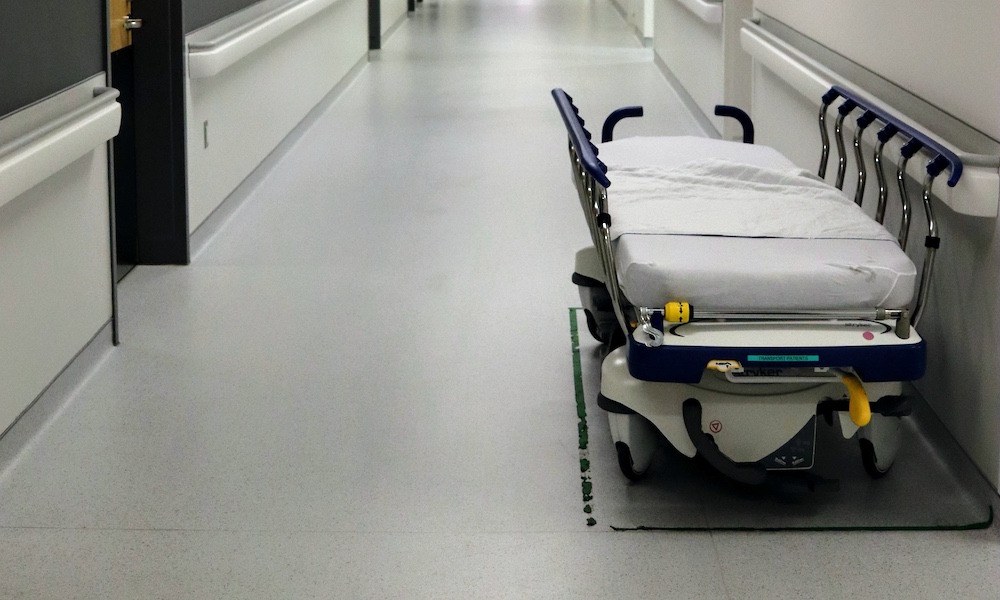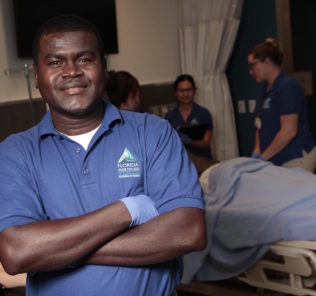New Clinical Simulation Center Updates | July 2022
Healthcare simulation centers are constantly being unveiled and upgraded across the United States and globally. As technology progresses, these clinical spaces are able to help transform how medical education and training are completed and have become integral to learners’ medical education within such clinical education buildings, medical centers, or training facilities devoted to healthcare simulation. Each new healthcare simulation center that opens provides even greater opportunities for learners to gain the skills and experience necessary to perform in the field and prioritize patient safety. This HealthySimulation.com article shares the most recent updates announced from various healthcare simulation centers around the world.
UNT Health Science Center Opens Regional Simulation Center With ‘Fully Immersive’ VR Rooms
UNT Health Science Center at Fort Worth recently announced the opening of the university’s $6.75 million Regional Simulation Center. According to Dallas Innovates, the new clinical simulation center features “immersive simulation spaces” powered by 360-degree virtual-reality projections; 14 realistic-looking examination rooms; VR headset learning experiences; an adaptable procedural skills suite; a daily-living activities suite designed to look like a home’s interior; and assorted team and learning rooms. The center is located in a renovated space on the first floor of the Gibson D. Lewis Library at 955 Montgomery St. in Fort Worth and is now open for training for hospital residency programs, emergency medical service providers, hospital personnel, nursing home staffers, clinical teams, first responders and more, states UNT HSC.
Sponsored Content:
UCF Nursing’s Simulation Center Awarded New International Endorsement
The Simulation, Technology, Innovation & Modeling (STIM) Center at UCF’s College of Nursing was among an elite group of nine simulation programs worldwide — and the only one in Florida — to earn the new Healthcare Simulation Standards Endorsement from the International Nursing Association for Clinical Simulation and Learning (INACSL), according to the school. The international endorsement recognizes the STIM Center for demonstrating excellence in applying the Core Four Healthcare Simulation Standards of Best Practice. These include Prebriefing: Preparation & Briefing, Facilitation, Debriefing, and Professional Integrity. The university added that this is the second global honor for the STIM Center, which earned accreditation from the Society for Simulation in Healthcare in 2020.
UNF and HCA Florida Healthcare Will Open Educational Simulation Center
The University of North Florida and healthcare facilities provider HCA Florida Healthcare is now working to develop a healthcare simulation center for UNF Brooks College of Health nursing learners. The clinical simulation center, which will be named the “HCA Healthcare Center for Clinical Advancement at the University of North Florida,” will be located at the UNF MedNexus facility on the Florida State College at Jacksonville Deerwood campus. According to the American City Business Journals, the medical simulation center will be operational for UNF nursing learners beginning in the fall 2022 semester.
Sponsored Content:
Purdue University Global Partnering with Dallas County Hospital on Simulation Center
The Purdue University Global School of Nursing has recently partnered with Dallas County Hospital to create a more efficient and innovative learning model that meets the needs of Purdue University Global learners, Dallas County Hospital staff, and the community. The joint venture will include a state-of-the-art healthcare simulation center at Dallas County Hospital in Perry, Iowa. According to Purdue University, the clinical simulation center will utilize a “family of high-fidelity, Gaumard brand manikins that include an infant, child, birthing mother, and adult.”
The university shares that the space will also consist of two large high-fidelity simulation suites staged to mock hospital rooms with audio/video capabilities, a master control room, two conference rooms to hold debriefings, a skills lab practice room, break area, nurses’ station, central supply area, medication preparation space, offices, and storage space.
Medical Simulation Center Opens on University of the Virgin Islands Campus
The University celebrated the opening of its new state-of-the-art Medical Simulation Center. Along with a ribbon-cutting, participants got to see high-tech, interactive demonstrations of the simulations our learners will use to learn medical techniques and patient care. The one-story building at the entrance to the university is more than 21,000 square feet with trauma and hybrid operating rooms, 18 surgical skill lab areas, four-team training rooms, patient exam rooms, a dining room, and an auditorium.
UT Arlington Plans to Unveil New Smart Hospital
The University of Texas at Arlington is preparing to complete the university’s new College of Nursing and Health Innovation Smart Hospital/School of Social Work building later this year. This new state-of-the-art facility broke ground in 2021 and will house the College’s new Smart Hospital. This will serve as a training space to feature the latest healthcare simulation technology for nursing learners in the Dallas-Fort Worth Metroplex.
Plans inside the new Smart Hospital include a virtual reality suite, three large skills labs that can fit up to three clinical groups at a time, as well as smaller individual high-fidelity simulation rooms. A Home Health Suite is also being outfitted in the Smart Hospital, which will be used to train nursing learners on how to provide at-home care.
The 150,000-square-foot building will also serve as a new center for interdisciplinary learning, encouraging learners of both the School of Social Work and the College of Nursing and Health Innovation to think outside of their skillsets. By creating an environment where both social work and nursing learners can collaborate and innovate, UTA will graduate a new generation of social work and healthcare professionals uniquely equipped to meet the critical needs of North Texas communities.
More About Clinical Simulation Centers
Building a healthcare simulation center involves a huge amount of planning. All the stakeholders must come together and have input into the construction. The technical logistics and equipment are complex. For example, some healthcare simulation centers have simulation laboratories that exactly mimic an operating room, a delivery room, an emergency department, a medical-surgical floor room, an ICU room, etc. Experts from medical specialties and educators need to have input into the planning phase of the construction. Once the construction is complete, funds are needed for ongoing maintenance, repair, and replacement of equipment as the facility ages.
In many medical simulation training centers, the observation room serves as the debriefing room. In addition, there is usually a separate control room where the simulation technician sits. This is the person dubbed a Simulation Technology Specialist who remotely controls the manikin, such as the Laerdal SimMan3G, and who is responsible for setting up all the equipment and applying any special effects medical makeup called Moulage.
In addition, a clinical educator will be present in the control room. The educator, who often speaks the voice of the manikin controls the physiological and spoken responses of the manikin usually in response to the interventions of the learners within the sim lab. The setup below would be typical for a small simulation center.
Imagine a large-scale healthcare simulation center with multiple sim labs, control rooms, and debriefing. Add in patient examination rooms with standardized patients, rooms full of task trainers, banks of computers, and conference facilities, and the simulation center could easily occupy thousands of square feet.
These medical simulation centers cost millions of dollars to build and operate and are primarily found in large medical centers and universities. Funding for simulation centers can come from donations, grants, and university/medical center funding. Some simulation centers generate funds by renting out their spaces to other institutions or offering courses for which they charge a fee.
Learn More About Clinical Simulation Centers
Lance Baily, BA, EMT-B, is the Founder / CEO of HealthySimulation.com, which he started in 2010 while serving as the Director of the Nevada System of Higher Education’s Clinical Simulation Center of Las Vegas. Lance also founded SimGHOSTS.org, the world’s only non-profit organization dedicated to supporting professionals operating healthcare simulation technologies. His co-edited Book: “Comprehensive Healthcare Simulation: Operations, Technology, and Innovative Practice” is cited as a key source for professional certification in the industry. Lance’s background also includes serving as a Simulation Technology Specialist for the LA Community College District, EMS fire fighting, Hollywood movie production, rescue diving, and global travel. He and his wife live with their two brilliant daughters and one crazy dachshund in Las Vegas, Nevada.
Sponsored Content:
















